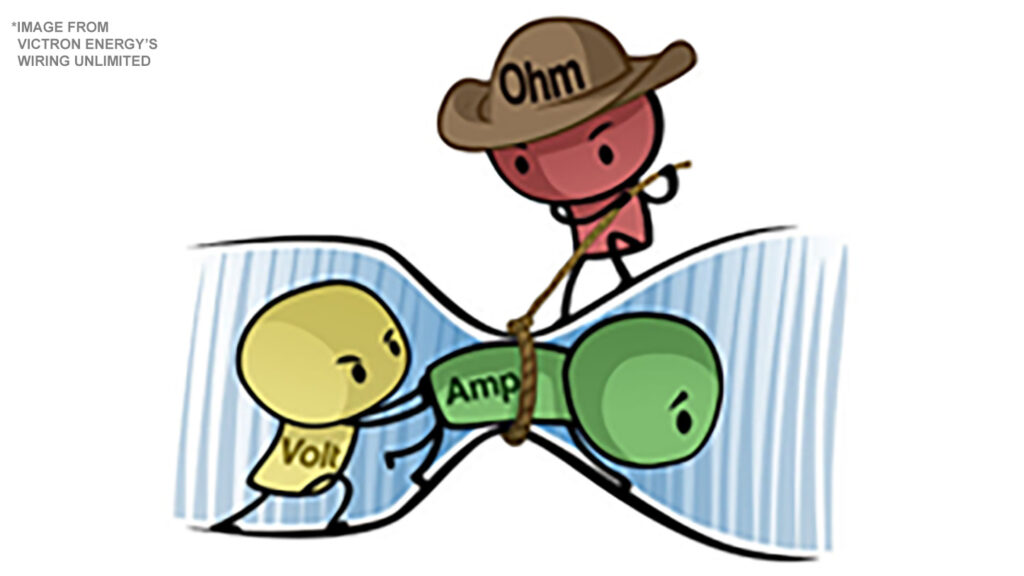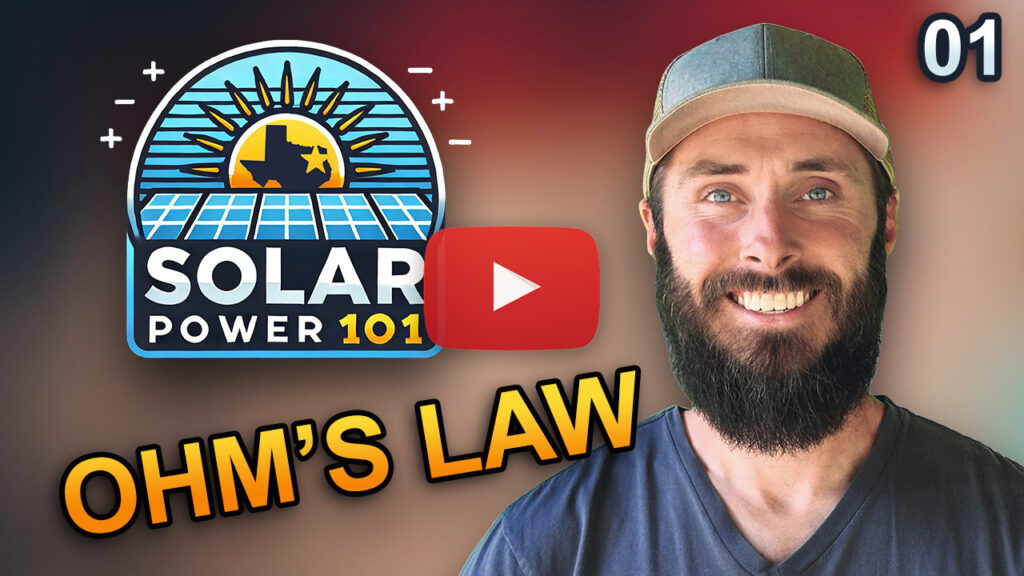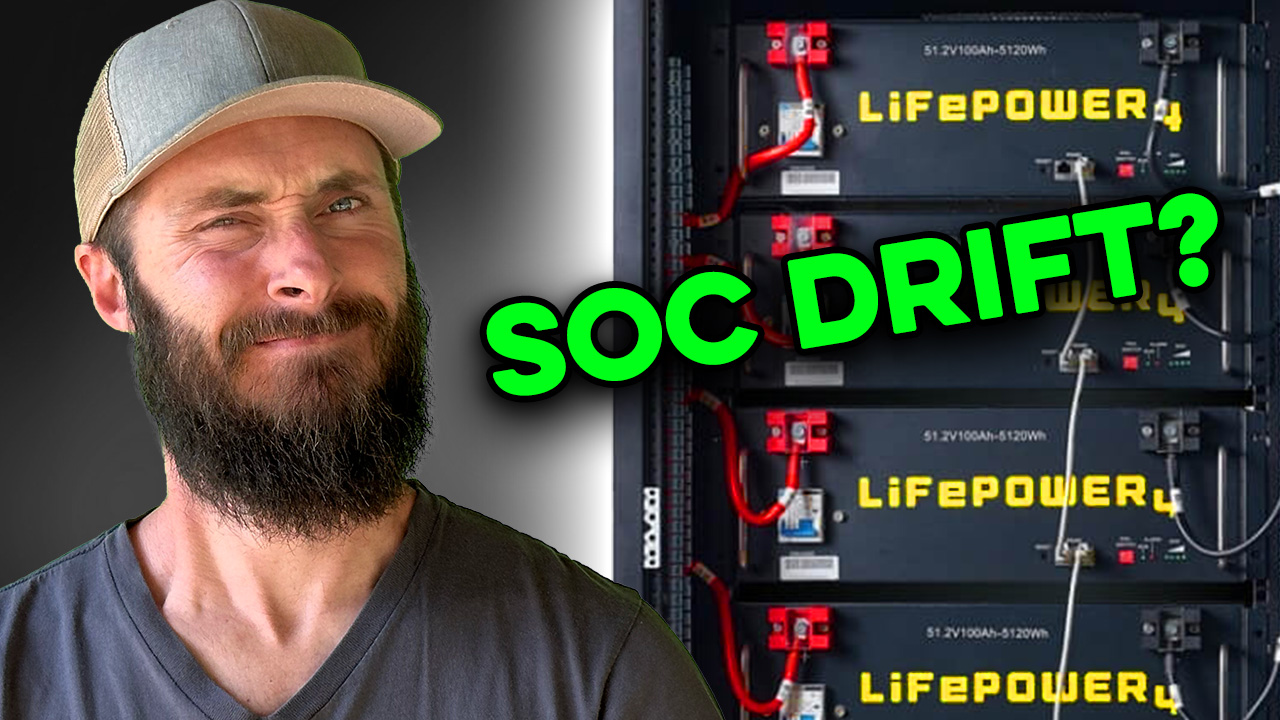Understanding Ohm’s Law: The Foundation of Electrical Circuits
Why Ohm’s Law Matters
If you’re getting into off-grid solar power or DIY electrical work, one of the first concepts you need to understand is Ohm’s Law. It’s the key to knowing how voltage, current, and resistance work together in a circuit. Once you grasp this, designing and troubleshooting electrical systems—including solar power setups—becomes much easier.

What is Ohm’s Law?
Ohm’s Law explains the relationship between voltage (V), current (I), and resistance (R) in an electrical circuit. The formula is:
V = I × R
Where:
- V (Voltage) is the electrical pressure pushing current through a circuit.
- I (Current) is the flow of electricity measured in amperes (A).
- R (Resistance) is how much a material resists the flow of electricity, measured in ohms (Ω).
If you know any two of these values, you can always calculate the third.
Ohm’s Law Explained with a Water Hose Analogy
A great way to visualize Ohm’s Law is by comparing electricity to water flowing through a hose:
- Voltage (V) = Water Pressure – The higher the pressure, the harder the water pushes.
- Current (I) = Water Flow Rate – The amount of water moving through the hose.
- Resistance (R) = Hose Size – A smaller hose (higher resistance) restricts the flow, just like a thin wire restricts electrical current.
If you increase voltage, more current flows. If you increase resistance, less current flows. This is why understanding Ohm’s Law is so important when working with electrical systems.
How Ohm’s Law Applies to Solar Power
In off-grid solar systems, Ohm’s Law helps determine:
- Proper wire sizing to prevent power loss.
- The correct fuse and breaker ratings for safety.
- How voltage and current affect battery charging and power consumption.
Without this knowledge, you risk inefficient power delivery, overheating wires, and potential system failures.
Watch the Video Breakdown
For a visual explanation and real-world examples, watch my full breakdown of Ohm’s Law:

In the video, I use practical demonstrations to show how voltage, current, and resistance interact. If you’re new to electrical work, this is the best place to start.
More Resources
If you want to dive deeper into electrical concepts, check out Wiring Unlimited, an excellent document by Victron Energy that breaks down wiring principles in an easy-to-follow format. You can find it linked here:
What’s Next?
This is just the first step in understanding electricity. In the next post in the series, we’ll apply Ohm’s Law to power calculations, which is crucial for designing a solar power system.
🔜 Next: How to Calculate Power Using Ohm’s Law (I’ll link here once it’s done)
If you’re just getting started, check out the full Solar Power 101 series for a step-by-step guide to off-grid electricity:
Stay Connected
If you found this helpful, make sure to: ✅ Subscribe to my YouTube channel for more videos.
✅ Drop a comment below if you have questions—I’d love to help!
Let’s keep learning together! 🚀
Recent Posts
Spring 2025 Signature Solar Discount Code – 5% OFF EG4 6000XP Inverter (Limited Time!)
Looking for a Signature Solar discount code that works in 2025? Want to to save money on your next solar inverter purchase? You’re...
Parallel EG4 6000XP Install with EG4 WallMount Batteries
Welcome to the Ultimate DIY Off-Grid Solar Build For Beginners! If you’re planning an EG4 6000XP Install, this step-by-step guide will walk you...
How to Fix EG4 LifePower4 SOC Drift
Lithium SOC Drift Happens State of Charge (SOC) drift is a common issue you might face with your EG4 LifePower4 batteries. Over time,...



